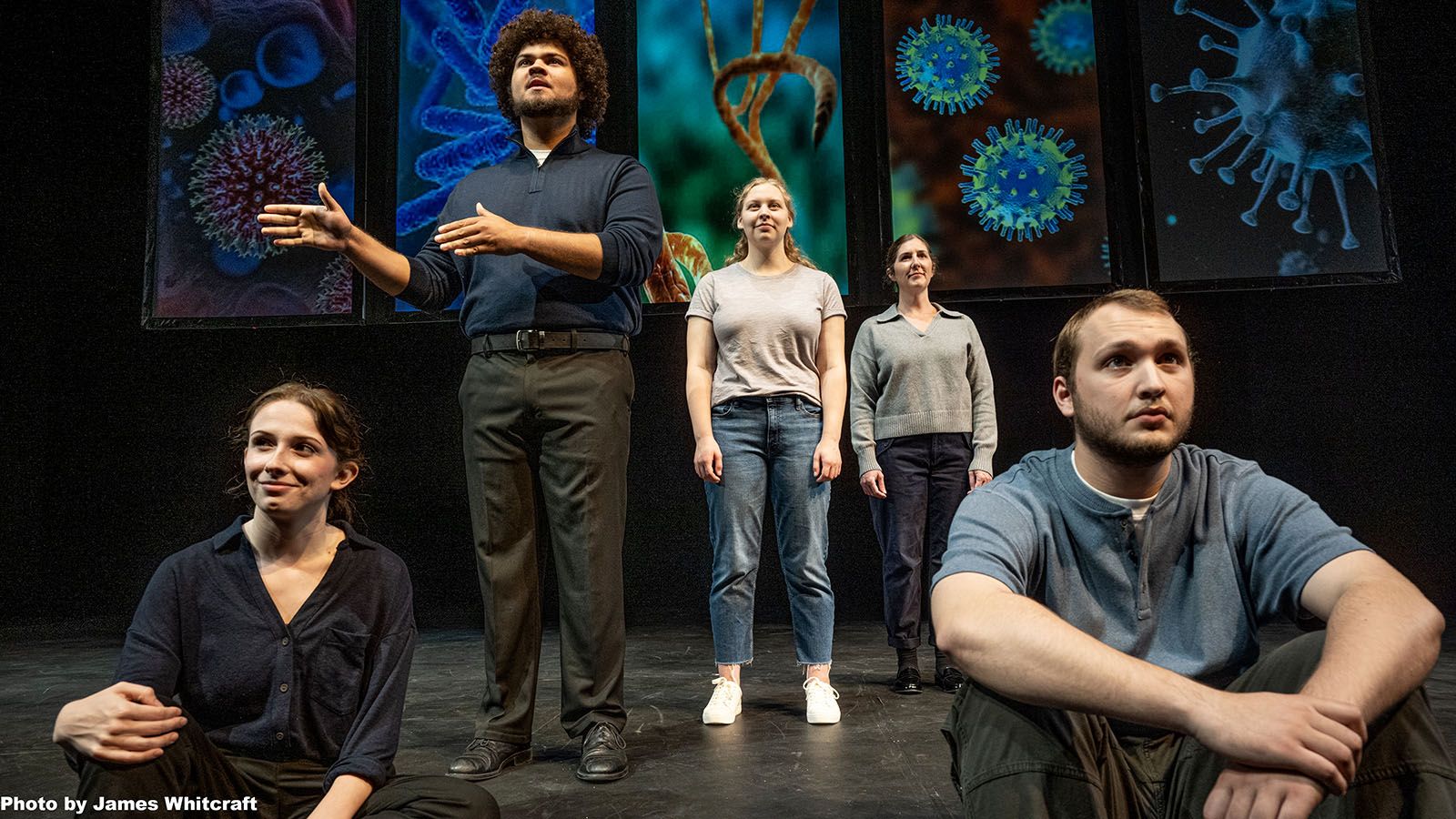When faced with your own mortality, when you look at your life, what do you see?
This is one of the questions pondered in Purdue University Fort Wayne’s upcoming production of The Catastrophist at Williams Theatre, Sept. 20-28.
The play is based on the life of Nathan Wolfe, playwright Lauren Gunderson’s husband and a world-renowned virologist, who was once named one of Time’s 100 Most Influential People in the World for his work tracking viral pandemic outbreaks. Wolfe proposed pandemic insurance years before the coronavirus outbreak. No one bought it.
Now, post-COVID, The Catastrophist explores his story.
‘The Catastrophist’
PFW Department of Theatre
8 p.m. Friday-Saturday, Sept. 20-21
2 p.m. Sunday, Sept. 22
8 p.m. Thursday-Saturday, Sep. 26-28
PFW Williams Theatre
2101 Coliseum Blvd. E., Fort Wayne
$5-$18 · (260) 481-6555
Playwright’s blessing
The PFW production is unique in that Gunderson’s script is written as a one-man show: one act, one actor — a type of production that is difficult to float in an academic setting, explained director Jeff Casazza.
“I fell in love with the play last year when reading it,” he said. “I was like, I really want to work on this play, but I don’t think that a university is ever going to approve a one-person show, no matter how good it is.”
Casazza, however, didn’t let that stop him from exploring other options, including reaching out to the playwright.
“I was trying to find different ways of how I could contact the playwright,” he said. “I eventually found her, I think, via Facebook. And I Facebook-messaged her, and said, ‘I really love your play, but I don’t think we’re going to do a one-person show.’ ”
What Casazza proposed to Gunderson was to produce the play using five performers all playing the same character, performers who would possibly be of different ethnicities, genders, and ages. To his delight, Gunderson was on board.
“She responded within 24 hours,” Casazza said. “Lauren was like, ‘Yeah, cast it however you want, and reassign the lines however you want.’
“I was just thrilled that she would let us play with her husband in this very exciting, theatrical way. She said, ‘That sounds like a great idea. You should do it. You have my blessing to do whatever you want,’ as long as we’re still doing the script as she wrote it. So we did.”
Split personalities
Once he got the go-ahead, Casazza got to work straight away divvying up the script.
“I spent a couple of months not really adapting it but assigning all the lines to one of five people,” he said. “I started building five different versions of Nathan’s character through how I was dividing the lines. So, it’s all of him playing the same person, but from different perspectives.”
The concept of dividing a character is not a completely new idea.
Recently, Disney and Pixar used this idea in its duo of Inside Out movies, showing a character through her feelings. But in the theater world, this idea is central to the works of German theater practitioner and playwright Bertold Brecht, and that’s the direction that Casazza took.
“Brecht’s idea was that there’s probably 20 people running around inside of me, and it depends on who I’m with or where I am, which one of those has dominance,” Casazza said of Brecht’s style. “Brecht once said something like, ‘When I’m with my wife, I’m playing the character of husband, but when I’m with my parents, I’m playing the character of son. And when I’m with my child, or children, I’m playing the part of father, but I also play a teacher, I play a colleague, I play an artist.’ That’s how Brecht plays tend to go.”
Casazza’s adaptation divides Wolfe’s persona into five characters: A Scientist (Isaac Derbyshire), A Jewish Man (Olivia Albertson), A Husband (Jackson McKinney), A Father (Kat Hickey), and A Son (Madison Morgan).
Musical feel
As promised, the production’s cast is diverse.
“There are two male-identifying actors and there are three female-identifying actors,” Casazza said. “All of these five actors have their own identification in a lot of different ways, but yes, they’re not all men, and they’re not all one race.
“Four of them are what would be traditional students in that, I would say, they’re age 20-22 range, and one of them is older than that. It’s been very interesting to see.”
Likewise, the staging has been interesting.
Where previously The Catastrophist was staged purely on a blank stage, using multiple camera angles to stream during the pandemic, adding more actors has made it somewhat like a dance.
“It feels almost musical because of how you coordinate five people moving as one person in basically 23 scenes,” Casazza said. “So it feels like there’s 23 dances that need to be choreographed, in that sense.”
As in the original production, the stage is blank; in the PFW production, however, the audience will not be left without visuals as there are upwards of 250 projections used.
The blank stage, Casazza said, is the audience’s way into Wolfe’s mind.
“The bare stage is kind of a black hole, because it’s Nathan’s mind,” he said. “It’s Nathan’s life, and we have to see all of Nathan’s life. So, there’s no way to do that realistically. And so we’re looking at Nathan’s thoughts and Nathan’s emotions and all that he remembers and what he hopes for.”
Casazza finds this production has moments that will register with everyone.
“I think it can touch every single person in a lot of different ways,” he said. “Because it’s really about the human condition and how we want to live our lives and what makes our lives worth living. We’re all people looking at the world trying to figure out why and how, and that’s what this play is, and it’s able to deal with both of those things in both a scientific and a humanistic way.”
 Submit Your Event
Submit Your Event




